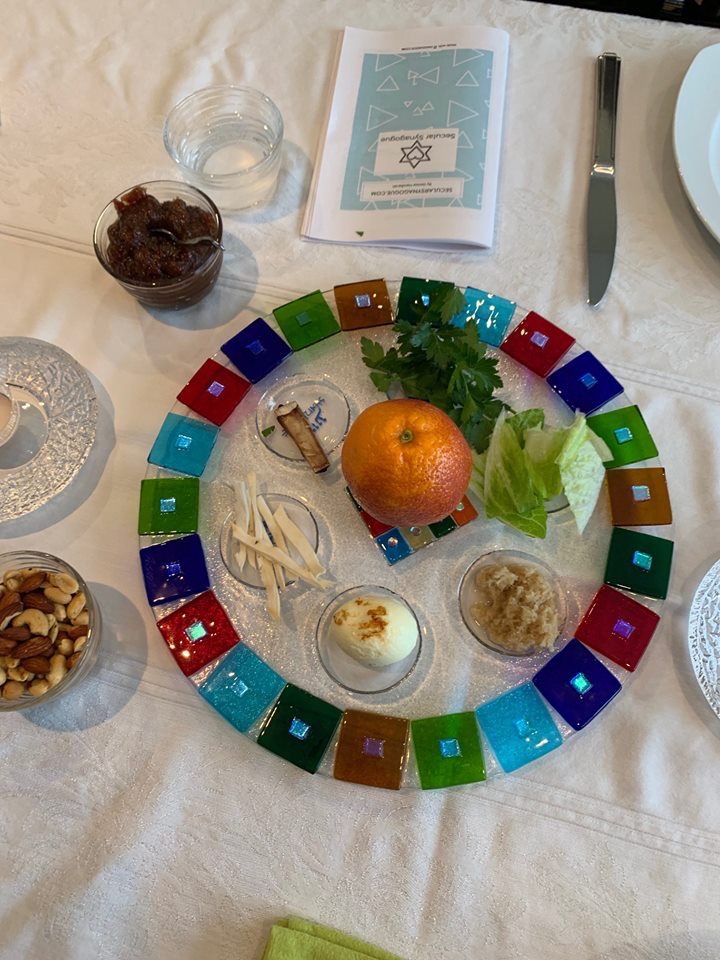As we prepare for Passover which starts tomorrow evening, we might be thinking about how to make the holiday meaningful this year, when we can't do the typical seders with our families that we may be used to.
One way is to join a virtual seder (there are enough options for one each day — or you can check out the one Secular Synagogue ran and follow along!)! Another may be to focus on the themes of oppression and freedom, the purpose of Passover, and how you can work for freedom this year. Some of us are doing a #donatethedifference tzedakah (charitable) donation. The idea is to take the money we may have spent on hosting big dinners or purchasing host gifts etc and donate that money to a worthy cause instead.
Another opportunity our current reality provides is doing a different kind of "clean out". Many Jews search their homes high and low for "chametz" - bread/unkosher food. Even the smallest crumb must be burnt. My house is not fully kosherized for Passover (my husband, who isn't Jewish and loves sandwiches at least as much as he loves me, wouldn't be on board).
The "chametz" I want to clear out this year is anything that isn't serving me as I adjust to this new reality. I am taking the opportunity to purge documents or work files I don't need, etc. Some do a full spring cleaning around Passover and now that most of us are at home a lot more, it's a great time to Marie Kondo your living space and get rid of stuff that doesn't "spark joy."
Some of us are also cleaning out our social media feeds. You can "unfollow" or mute people who are posting news from untrustworthy sources, who are fear-mongering, or who are for any other reason not helping you at this time. I cleaned out my social media feed of stuff that tends to stress me out -- even news/media sources. I consciously check the news once a day instead so that it isn't overwhelming. The truth is, social media can be an incredible connector, especially now. I realize there are problems with Facebook, Zoom, and the rest — stealing our data and exposing us to weird ads. But we can control a lot of what we see and put out there via social media. Make it a “space” that you are proud of and that serves you.
Finally, take this time to clean out your own thoughts via journalling, meditation, talking, or simply breathing. If you have been stressed out, anxious, overwhelmed, that is all normal and ok. It is also possible to start to try and feel a bit better. Focus on the present, on what you can control, and on what you have to be grateful for. Sometimes the cleaning out we really need to do is of our own negative thoughts. As we head into this Passover, ask yourself: what is no longer serving me? What can I let go of?
I wish you a beautiful and meaningful Passover!
Until next time,
Rabbi Denise
PS: I was recently on this beautiful radio show Tapestry, speaking about how to make Passover meaningful now. If you want to give it a listen, it’s the second half of this episode: https://www.cbc.ca/radio/tapestry/soundtrack-for-the-soul-featuring-hawksley-workman-diy-digital-passover-seder-1.5519104
PPS: Secular Synagogue is still welcoming new members for this cohort but our doors close soon. Get in touch if you’d like to learn more!





